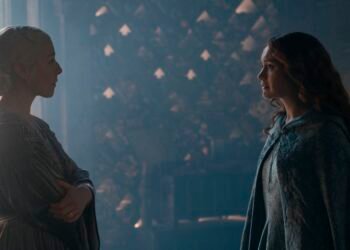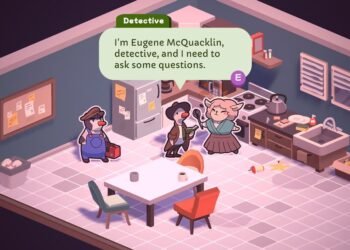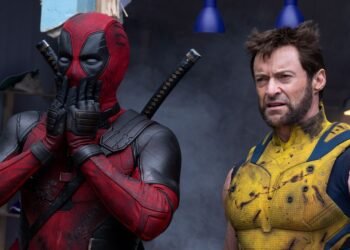The “next-gen” upgrade for The Witcher 3: Wild Hunt is almost here, and I’ve spent a few days playing through the first few hours of the game (very leisurely) to see what it’s like. I’ve got good news: It is, in fact, a complete Witcher 3 experience with some light quality-of-life improvements and a substantial graphical upgrade. It also still serves as a high-water mark in RPG design, to the extent that it still makes other games look dimmer by comparison.
The update, which I played on PlayStation 5, rests on three major pillars: visual upgrades, several fan mods that have been integrated into the game proper, and some new DLC that integrates aesthetics from Netflix’s The Witcher series into the game.
The visual updates offer a performance mode that locks the game at 60 frames per second. They’re good frames, and although I know that PC players have been living in this world for a while, the experience of kicking back on the couch and watching Geralt of Rivia pirouette while cutting Drowners in half can’t be beat. It’s great outside of action, too. Watching Geralt’s facial expressions at 60 fps on a big 4K television is mesmerizing. His characteristic “hrmms” and “uh-huhs,” with their attending slight changes of expression, have always been at the core of his character; there is a cleanness to the game’s lines and movements in performance mode that draws those things out, and makes them all the more stylized, with well-defined edges and a slightly softer palette in between.

Image: CD Projekt Red
It also doesn’t hurt that the performance mode never made the fans in my PS5 kick in. By contrast, anytime that Geralt even thought about speaking to townsfolk, or galloping Roach through a monster-infested swamp, on my last-gen playthroughs, it sounded like my PS4 was going to launch into orbit.
I wasn’t nearly as impressed with the update’s 30 fps ray tracing mode, however. I’m not sure if it was an interaction with my TV or an actual frame rate issue, but turning the fidelity-focused mode on seemed to introduce an actual stutter. Even weirder, in an early cutscene with the sorceress Yennefer, it seemed to entirely break the audio sync with the character models (pausing the cutscene and switching back to Performance immediately fixed it). I did not leave it on very much, other than to simply see how things looked with the major lighting changes.
As I continue my replay of the game on this newer console, I am going to keep it on performance mode, if only because that allows the game to lean into its strengths. Geralt’s world is a world, and the new 4K textures, with their lush greens and churned browns, provide a beautiful backdrop against which Geralt and crew stand out. Whatever light ray tracing is invoked here is just the right amount, without detracting from the movement of it all. Velen was always mostly swamps, but in The Witcher 3’s new 2022 incarnation, the bogs take on an ethereal look — almost like gobs of Vaseline poured across the wilderness. Fantasy Vaseline.

Image: CD Projekt Red
Improved graphics, mods that make inventory management and map navigation a little easier, and some throw-in DLC are all good. But I’m not sure that they are the explosively exciting thing about returning to The Witcher 3 in 2022. These are elements that might lure you in for a replay or, if you’re lucky, your first foray into the interlocked worlds of commoners, creatures, immortals, and lords that Geralt weaves through. They’re what gets you in the door, maybe, but they’re not the party.
The party — by which I mean the massive political and interplanar story that happens within The Witcher 3 — is still incredible, and still manages to make the vast majority of other open-world RPGs (most other games, really) seem lacking by comparison.
Take White Orchard as an example. It’s the first area of the game, and it functions as both a catch-up for veterans of the franchise and a tutorial for new players. Geralt and his pseudo-dad Vesemir are trying to meet their old friend Yennefer in the middle of a war zone, and she wasn’t where she told them she would be. They’re on the lookout, and they’re immediately dragged into things that witchers do: There’s a gryphon to hunt and local politics to navigate, and the hunters must find a solution that satisfies both. The White Orchard section of the game takes less than two hours (more quickly, for others), but it is absolutely laden with information about the world and the goals of its characters, big and small. We get to know the nations that are warring. We learn about their policies, and who might gain power if the invaders win. We see inefficiencies and hopes for a better tomorrow, and we see old prejudices remain and new ones emerge.

Image: CD Projekt Red
Geralt lives in a place as fleshed out as any game location has ever been, and more than that, he’s weary of it. Through him, we learn how to be weary of it ourselves, and we can be angered by the short-sightedness of its inhabitants. It was astonishing to me how quickly I was absorbed back into this fantasy world after thinking I was done and totally over it, having replayed it for (I thought) the last time a couple of years ago. The upgrades help with this feeling of character alignment and being seated in the fiction — the UI is more unobtrusive now, and there’s a new efficiency to menu-ing that makes the whole thing much quicker to navigate — but that’s not what is going to keep people engaged these next few weeks, or even months. That magic was there the whole time.
Oddly enough, the prevailing thought that dogged me as I played The Witcher 3 again was actually about another game. I was thinking about Cyberpunk 2077, which I played earlier this year, and how little it played off the successes of The Witcher 3. A strength of Geralt’s adventure is how little of it really has to do with him. He’s in some important rooms, and he meets movers and shakers, but warriors live and die without him. Dynasties fall. Monsters kill the weak. The mechanisms of life happen, and he doesn’t have to be there to see it all unfold — that’s what makes his tale so compelling. He’s a hero when he’s around, and he’ll move or shake as necessary, but his world is not one driven by a protagonist. It is a humble fantasy, or at least presents itself as one, and by contrast, Cyberpunk 2077 was so self-centered on the part of the player that it seemed like people didn’t exist if they weren’t within my field of view. In that game, history happened so that protagonist V could be there to inherit it. Geralt is almost anonymous by comparison.
The next-gen upgrade is going to make that available for more people, and I’m excited for that. But it did leave me with a melancholy feeling about where we’ve been and, given the future of The Witcher franchise, where a post-Cyberpunk Witcher game might go. I hope CD Projekt Red’s 2015 RPG, rather than the one it released in 2020, is the foundation that’s built upon.
The next-gen upgrade for The Witcher 3: Wild Hunt will be released Dec. 14 on PlayStation 5, Windows PC, and Xbox Series X. The game was reviewed on PS5 using a pre-release download code provided by CD Projekt Red. Vox Media has affiliate partnerships. These do not influence editorial content, though Vox Media may earn commissions for products purchased via affiliate links. You can find additional information about Polygon’s ethics policy here.
























































